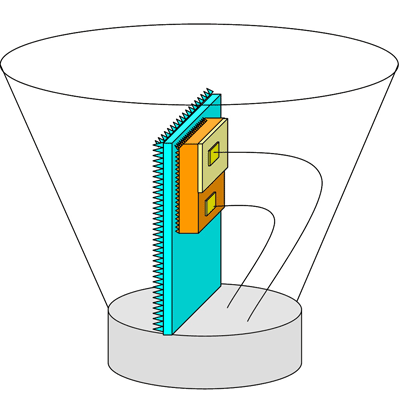Researchers present solution to LED efficiency droop problem
New design could lead to more affordable LED lighting, greater adaptation of technology
Few out there doubt the wide-scale positive impact light-emitting diodes will have once they crack the consumer market. And thanks to a group of researchers from Japan and the University of California, Santa Barbara, this may be sooner than later.

Researchers believe they may have found a solution to LED droop issues.
One of the biggest hurdles preventing LEDs from gaining widespread adoption is their tendency to “droop”; that is, the point where applying more electricity to it no longer gives the light the same sort of kick, if you will. It’s here that the LED’s productivity levels off and its efficiency plateaus.
What the team did, in layman’s terms, is incorporate a new design within the manufacturing process for green and blue LEDs to avoid said droopage.
“We believe this technology could be a big breakthrough and has the potential to change the future of lighting,” says Yuji Zhao, a graduate student at the Solid State Lighting and Energy Center at UCSB and one of the lead researchers on the team.
The reason why the team chose to focus their study on blue and green LEDs, in particular, is because the two colors provide the necessary hues that blend with other wavelengths and provide the familiar white light that we expect from household bulbs.

A working blue LED using the design. (Image courtesy Yuji Zhao, University of California Santa Barbara.)
They also happen to be the hardest to engineer, and are considered by many to be the “droopiest” of all LEDs.
So what did they do?
The team designed their LEDs to have nontraditional, tilted crystal orientations. By doing this, they were able to lessen the field effect which, in turn, exhibited some the lowest reported measures of droop.

Schematic of the transparent LED packaging design. (Image courtesy Yuji Zhao, University of California Santa Barbara.)
Their design also allowed the team to fabricate LED chips smaller than standard commercial LEDs. This, the team predicts, could one day lead to significant reductions in manufacturing costs.
Why this works
LEDs are already many times more energy efficient than incandescent bulbs, but due to the droop issue, they lose a significant amount of this efficiency advantage when run at the high current levels that are required for your average, run-of-the-mill household lighting.
No one is sure what causes an LED to droop, though several theories exist. The solution provided by this group of researchers is a promising alternative to not necessarily eliminating, but most definitely minimizing the droop effect.
Changes to the manufacturing process
Quick refresher: LEDs are made from layers of doped semiconductors that are sandwiched together. When a voltage is applied across the layers, electrons and holes migrate toward an area called the “active layer.” Here, they combine, whereupon a photon is released.
Now, in most commercially available blue LEDs, the crystals that make up these semiconductor layers are grown in a flat orientation (referred to as the “c-plane”). The problem with the traditional orientation of these crystals is that, more often than not, they create additional electrical fields that interfere with the reunion of the electrons and holes. By applying a nontraditional, more tilted crystal orientation, the research team is effectively bypassing this issue.
Outlook
While the team’s design works, they’re quick to admit that further research still needs to be done, in particular when it comes to the cost of the materials used. “The biggest problem right now is the relatively high cost of the gallium nitride [GaN] bulk substrates,” says Zhao. Here, he is referring to the thin sheets of crystalline material upon which the group’s LEDs are grown. “At UCSB we are also developing methods to mass-produce high-quality GaN bulk substrates. I have confidence in this and I think it’s just a matter of time before [the cost of GaN] will no longer be an obstacle.”
The team’s findings will be formally presented at the Conference on Lasers and Electro-Optics , which is taking place May 6 to 11 in San Jose, CA. The presentation is entitled “Semipolar (2021) Blue and Green InGaN Light-Emitting Diodes,” by Yuji Zhao et al. It is scheduled to start at 5 p.m. on Thursday, May 10 in the San Jose Convention Center. ■
Advertisement
Learn more about Electronic Products Magazine





